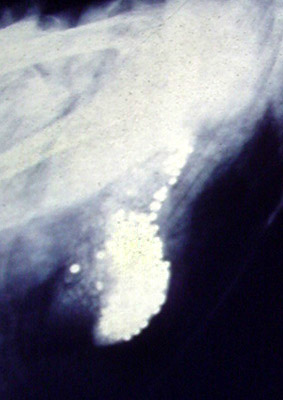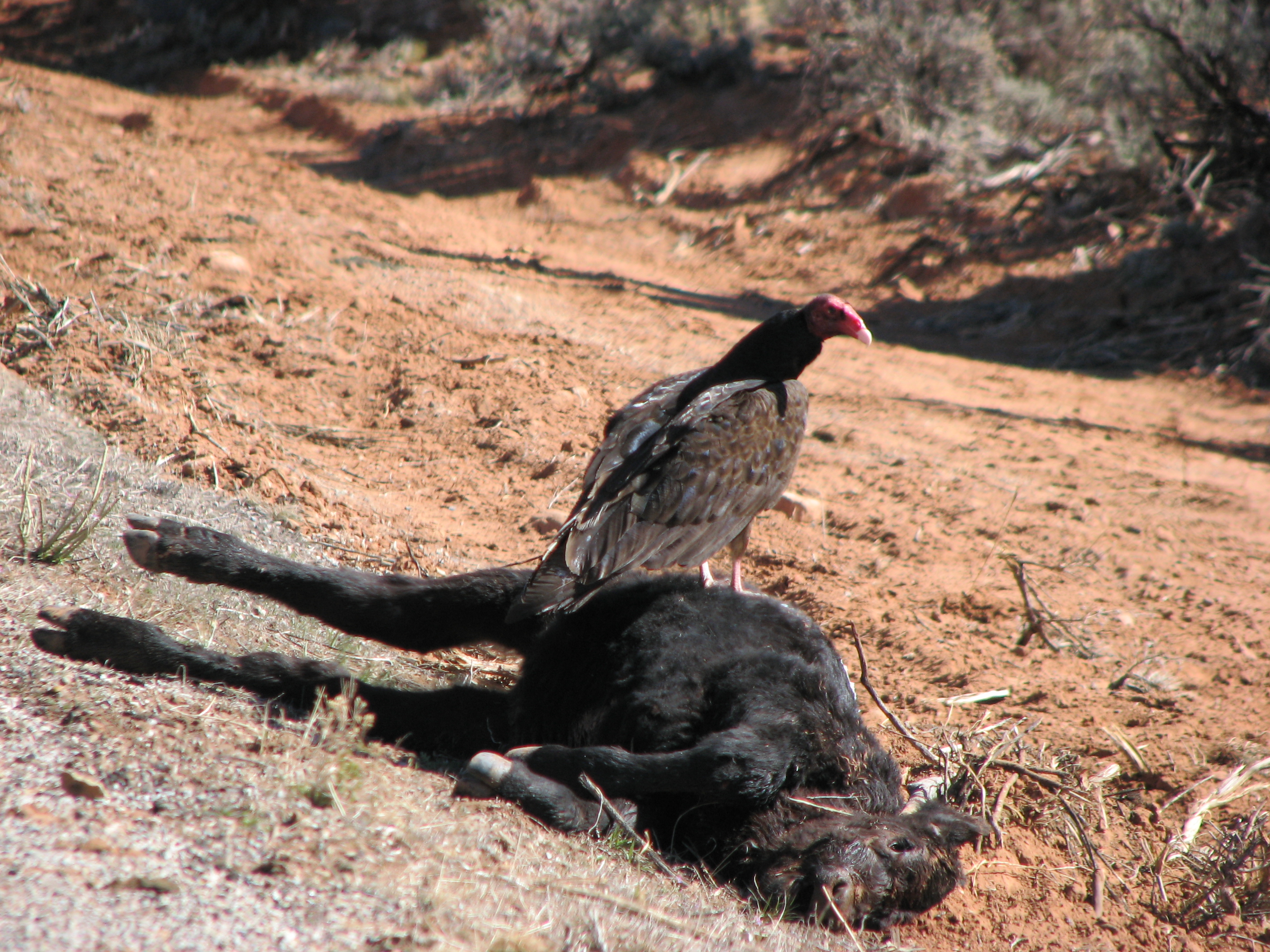Avian lead poisoning on:
[Wikipedia]
[Google]
[Amazon]
Animal lead poisoning (also known as avian plumbism, or avian saturnism for birds) is a veterinary condition and pathology caused by increased levels of the heavy metal
It is toxic to many organs and tissues including the
It is therefore particularly toxic to young animals, mainly dogs and cattle. As in humans, ''animal lead poisoning'' may be acute (from intense exposure of short duration) or chronic (from repeat low-level exposure over a prolonged period). Acute intoxication can quickly lead to
 Those routes include contaminated air, water, soil, and food, and also, for birds ingestion of grit (lead shots, lead bullets), ingestion of paints, materials that are left out from the factories like batteries etc.
Those routes include contaminated air, water, soil, and food, and also, for birds ingestion of grit (lead shots, lead bullets), ingestion of paints, materials that are left out from the factories like batteries etc.
 For precious animals;
* Repeat screening, case
For precious animals;
* Repeat screening, case
management to abate sources * Medical and environmental evaluation, * veterinary evaluation,
chelation, case management * If necessary, veterinary hospitalization, immediate
chelation, case management. The mainstays of treatment are removal from the source of lead and, for precious animals who have significantly high blood lead levels or who have symptoms of poisoning,
 Lead, one of the leading causes of toxicity in waterfowl, has been known to cause die-offs of wild bird populations. When hunters use
Lead, one of the leading causes of toxicity in waterfowl, has been known to cause die-offs of wild bird populations. When hunters use
National Pollutant Inventory - Lead and Lead Compounds Fact Sheet
{{DEFAULTSORT:Lead Poisoning
lead
Lead is a chemical element with the symbol Pb (from the Latin ) and atomic number 82. It is a heavy metal that is denser than most common materials. Lead is soft and malleable, and also has a relatively low melting point. When freshly cu ...
in animal's body.
Lead interferes with a variety of body and natural processes.
It is toxic to many organs and tissues including the
heart
The heart is a muscular organ in most animals. This organ pumps blood through the blood vessels of the circulatory system. The pumped blood carries oxygen and nutrients to the body, while carrying metabolic waste such as carbon dioxide to t ...
, bone
A bone is a rigid organ that constitutes part of the skeleton in most vertebrate animals. Bones protect the various other organs of the body, produce red and white blood cells, store minerals, provide structure and support for the body, ...
s, intestines, kidney
The kidneys are two reddish-brown bean-shaped organs found in vertebrates. They are located on the left and right in the retroperitoneal space, and in adult humans are about in length. They receive blood from the paired renal arteries; blo ...
s, and reproductive and nervous systems. It mainly affects the haematopoietic system
The haematopoietic system is the system in the body involved in the creation of the cells of blood.
Structure Stem cells
Haematopoietic stem cells (HSCs) reside in the medulla of the bone ( bone marrow) and have the unique ability to give rise t ...
. It also affects the sulfhydryl group containing enzymes and also thiol content of erythrocyte. It inhibits the enzyme delta amino levaminic acid dehydrogenase enzyme (ALA) which is present in the red blood cell
Red blood cells (RBCs), also referred to as red cells, red blood corpuscles (in humans or other animals not having nucleus in red blood cells), haematids, erythroid cells or erythrocytes (from Greek ''erythros'' for "red" and ''kytos'' for "holl ...
.
It is therefore particularly toxic to young animals, mainly dogs and cattle. As in humans, ''animal lead poisoning'' may be acute (from intense exposure of short duration) or chronic (from repeat low-level exposure over a prolonged period). Acute intoxication can quickly lead to
death
Death is the irreversible cessation of all biological functions that sustain an organism. For organisms with a brain, death can also be defined as the irreversible cessation of functioning of the whole brain, including brainstem, and brain ...
.
Prevalence
Lead is now a common environmental pollutant. For the birds, a commons source is leadshot
Shot may refer to:
Arts, entertainment, and media
* ''Shot'' (album), by The Jesus Lizard
*''Shot, Illusion, New God'', an EP by Gruntruck
*'' Shot Rev 2.0'', a video album by The Sisters of Mercy
* "Shot" (song), by The Rasmus
* ''Shot'' (2017 f ...
, eaten as grit.
Routes of exposure to lead poisoning
 Those routes include contaminated air, water, soil, and food, and also, for birds ingestion of grit (lead shots, lead bullets), ingestion of paints, materials that are left out from the factories like batteries etc.
Those routes include contaminated air, water, soil, and food, and also, for birds ingestion of grit (lead shots, lead bullets), ingestion of paints, materials that are left out from the factories like batteries etc.
Prevention
The use of alternative metals in shot such as steel and tungsten have been implemented since 1991 in the United States for all migratory bird hunting. Some ammunition manufacturers are producing bullets made of solid copper or a mix of 95% copper 5% zinc, which are in ways superior to lead bullets. There have been efforts to dredge marshlands to remove the build-up of lead in the sediment from the past however efforts such as this are expensive.Treatment
management to abate sources * Medical and environmental evaluation, * veterinary evaluation,
chelation, case management * If necessary, veterinary hospitalization, immediate
chelation, case management. The mainstays of treatment are removal from the source of lead and, for precious animals who have significantly high blood lead levels or who have symptoms of poisoning,
chelation therapy
Chelation therapy is a medical procedure that involves the administration of chelating agents to remove heavy metals from the body. Chelation therapy has a long history of use in clinical toxicology and remains in use for some very specific me ...
with a chelating agent
Chelation is a type of bonding of ions and molecules to metal ions. It involves the formation or presence of two or more separate coordinate bonds between a polydentate (multiple bonded) ligand and a single central metal atom. These ligands ar ...
.
Wildlife and lead poisoning
 Lead, one of the leading causes of toxicity in waterfowl, has been known to cause die-offs of wild bird populations. When hunters use
Lead, one of the leading causes of toxicity in waterfowl, has been known to cause die-offs of wild bird populations. When hunters use lead shot
Shot is a collective term for small spheres or pellets, often made of lead. These were the original projectiles for shotguns and are still fired primarily from shotguns and less commonly from riot guns and grenade launchers, although shot shell ...
, waterfowl
Anseriformes is an order of birds also known as waterfowl that comprises about 180 living species of birds in three families: Anhimidae (three species of screamers), Anseranatidae (the magpie goose), and Anatidae, the largest family, which i ...
such as ducks and other species (swan especially) can ingest the spent pellets later and be poisoned; predators that eat these birds are also at risk. Lead shot-related waterfowl poisonings were first documented in the US in the 1880s. By 1919, the spent lead pellets from waterfowl hunting was positively identified as the source of waterfowl deaths.Federal Cartridge Company Waterfowl and Steel Shot Guide. Volume I; 1988. Lead shot has been banned for hunting waterfowl in several countries, including the US in 1991 and 1997 in Canada. Other threats to wildlife include lead paint, sediment from lead mines and smelters, and lead weights from fishing lines. Lead in some fishing gear has been banned in several countries.
The critically endangered California condor
The California condor (''Gymnogyps californianus'') is a New World vulture and the largest North American land bird. It became extinct in the wild in 1987 when all remaining wild individuals were captured, but has since been reintroduced to nort ...
has also been affected by lead poisoning. As scavengers, condors eat carcasses of game that have been shot but not retrieved, and with them the fragments from lead bullets; this increases their lead levels. Among condors around the Grand Canyon, lead poisoning due to eating lead shot is the most frequently diagnosed cause of death. In an effort to protect this species, in areas designated as the California condor's range the use of projectiles containing lead has been banned to hunt deer, wild pig, elk, pronghorn antelope, coyotes, ground squirrels, and other non-game wildlife. Also, conservation programs exist which routinely capture condors, check their blood lead levels, and treat cases of poisoning.
Farm animals
Cows and horses as well as pet animals are also susceptible to the effects of lead toxicity. Sources of lead exposure in pets can be the same as those that present health threats to humans sharing the environment, such as paint and blinds, and there is sometimes lead in toys made for pets. Lead poisoning in a pet dog may indicate that children in the same household are at increased risk for elevated lead levels.See also
*Agreement on the Conservation of African-Eurasian Migratory Waterbirds
The Agreement on the Conservation of African-Eurasian Migratory Waterbirds, or African-Eurasian Waterbird Agreement (AEWA) is an independent international treaty developed under the auspices of the United Nations Environment Programme's Conventio ...
* Lead poisoning in raptors
Lead poisoning is a significant health issue affecting the raptor population, amongst other species. Without rehabilitation, many raptors will succumb to the symptoms of lead poisoning once affected. While the general public may not know how they ...
References
Cited texts
* * * * * * * * *External links
National Pollutant Inventory - Lead and Lead Compounds Fact Sheet
{{DEFAULTSORT:Lead Poisoning
Animal
Animals are multicellular, eukaryotic organisms in the Kingdom (biology), biological kingdom Animalia. With few exceptions, animals Heterotroph, consume organic material, Cellular respiration#Aerobic respiration, breathe oxygen, are Motilit ...
Intellectual disability